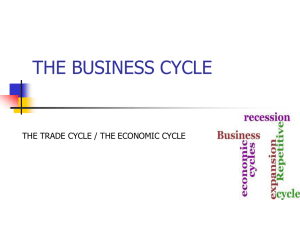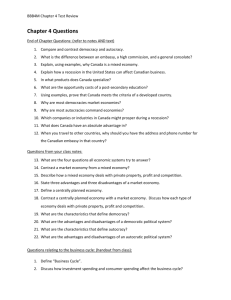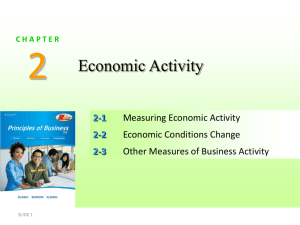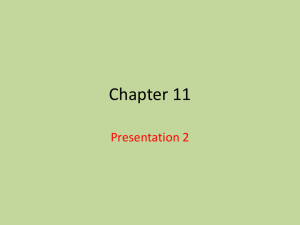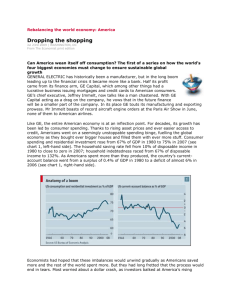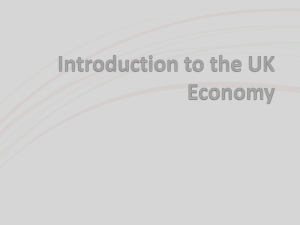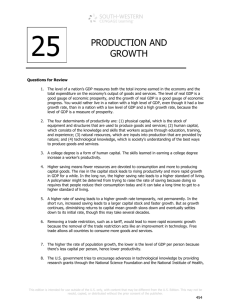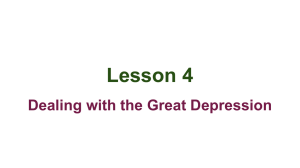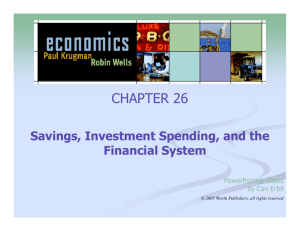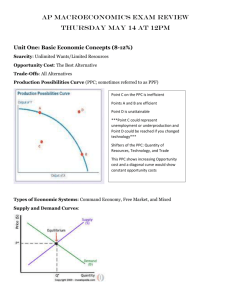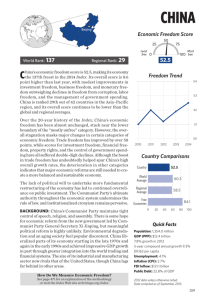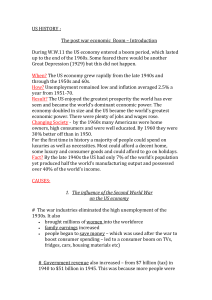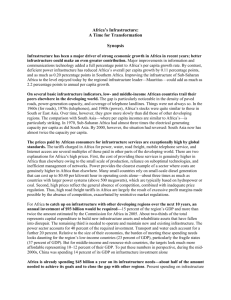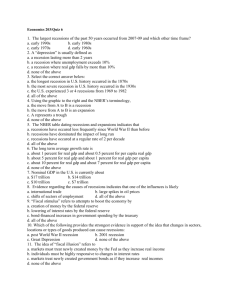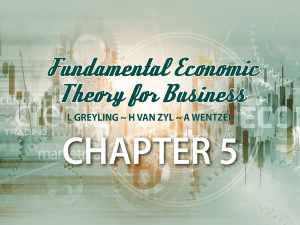The impact of the business cycle
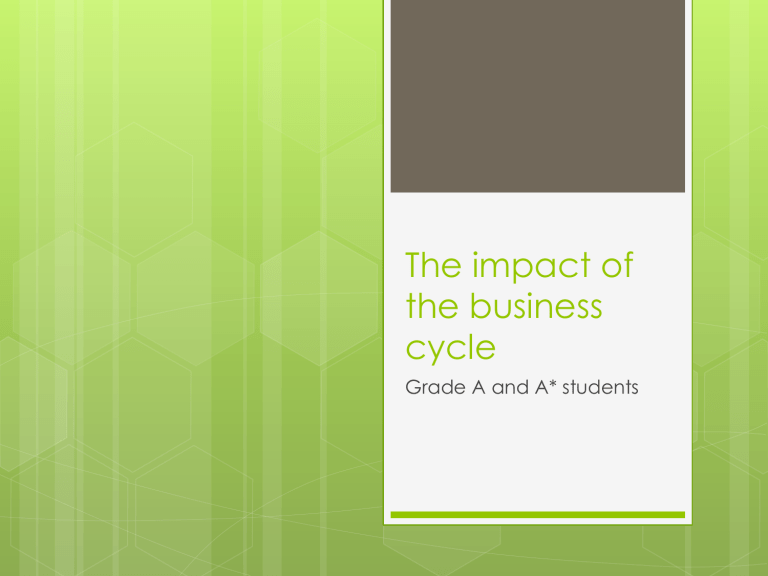
The impact of the business cycle
Grade A and A* students
Activity – Create a test and answer sheet
On Microsoft word, you will create a test and answer sheet (not multiple choice) on the impact of the business cycle.
You will get all the information from your test will be on the following slides
The test must have at between 10-15 questions with answers
Once you have completed, send to Mr Baker to check its ok (abaker@st-martins.essex.sch.uk). If confirmed print off both questions and answers.
Do not show anyone in the class your test and answers
Key terms
Economic growth is rise in economic activity
Economy is the economic activity carried out by people and businesses in a country
Quarters is the year split into 4 sections like the seasons
Recession is when level of economic growth is negative for two successive quarters
Business cycle is the fluctuations of economic activity over time
Economic activity is the amount of buying and selling that takes place over time
The economy
Everyday millions of people buy goods and service in the UK.
Businesses provide goods and services to final consumers and to customers who might be other businesses
Buying a chocolate from a newsagent is just one example of economic activity (the amount of buying and selling over a period of time)
The economy is referred to all people and businesses buying and selling.
Over time people the level of economic activity changes.
Sometimes it rises and sometimes it falls.
When we are confident about their jobs and feel their incomes will rise so they spend more
When we are not confident about the future, people might be worried about job losses, we end up stop spending and save.
Economic growth
This is measured by the yearly change in Gross Domestic Product (GDP). It is usually expressed as a % change.
Example Year 1 Tinseltown produces £1,000 worth of goods Year 2 Tinseltown produces £1,100 worth of goods
Economic growth would be 10%
It (GDP) can be measured in 3 ways. Each is identical
• The total production (output) of all businesses • The total incomes and profits in the country •
The total of all spending by individuals and businesses
WHAT CAUSES ECONOMIC GROWTH?
Anything which allows the country to produce more goods and services.
• More business investment * Better productivity • Better machinery * Improved training • Better skills * New technology • New ideas * Increased efficiency
COSTS AND BENEFITS OF ECONOMIC GROWTH
BENEFITS: More income for society, Should create jobs, Could reduce the number of poor people, More goods produced and probably more choice for customers and businesses, Higher standard of living, Feelgood factor in society
COSTS: Extra production could cause extra pollution, Exhaustion of non renewable resources like oil, Only the rich may gain the benefits The poor stay poor and inequality increases, Greater stress on workers to produce more goods
The business cycle
Economies go through a regular pattern of ups and downs in the value of economic activity (as measured by gross domestic product or GDP. This is known as the “business cycle” (sometimes you also see it referred to as the “economic cycle”).
The business cycle is crucial for businesses of all kinds because it directly affects demand for their products.
The business cycle is characterised by four main phases:
Boom: high levels of consumer spending, business confidence, profits and investment. Prices and costs also tend to rise faster. Unemployment tends to be low as growth in the economy creates new jobs
Recession: falling levels of consumer spending and confidence mean lower profits for businesses – which start to cut back on investment. Spare capacity increases + rising unemployment as businesses cut back and reduce stocks
Slump / depression: a prolonged period of declining GDP - very weak consumer spending and business investment; many business failures; rapidly rising unemployment; prices may start falling
(deflation)
Recovery: things start to get better; consumers begin to increase spending; businesses feel a little more confident and start to invest again and build stocks; but it takes time for unemployment to stop growing
Every business is affected by the stage of the business cycle, but some businesses are more vulnerable to changes in the business cycle than others.
For example, a business that relies on consumer spending for its revenues will find that demand is closely related to movements in GDP. During a boom, such businesses should enjoy strong demand for their products, assuming that the products are actually what customers want! But during a slump, the business has to “ride out the storm” – suffering a sharp drop in demand.
How businesses were affected by the business cycle
During the housing-market inspired boom of the early 2000’s, many retail and consumer goods businesses took advantage of the boom. Consumers were prepared to take on significant personal debt in order to finance their purchases. However, the sharp economic downturn during 2008 and 2009 saw many businesses suffer sales falls of between 10-30%. Some did not survive – their fixed costs were just too high to be able to remain viable.
Businesses whose fortunes are closely linked to the rate of economic growth are referred to as “cyclical” businesses. Examples include:
Fashion retailers
Electrical goods
House-builders
Restaurants
Advertising
Overseas tour operators
Construction and other infrastructure firms
By contrast, some businesses actually benefit from an economic downturn. If their products are perceived by customers as representing good value for money, or a cheaper alternative than more expensive products, then consumers are likely to switch. Good examples that were featured in the UK media during the recession of 2008/09 included:
Value retailers (e.g. Aldi, Lidl, Netto)
Fast-food outlets (e.g. Dominos, Subway)
Domestic holidays (e.g. B&Bs and holiday cottages)
Chocolate – for some reason, chocolate sales always increase strongly during an economic downturn!


